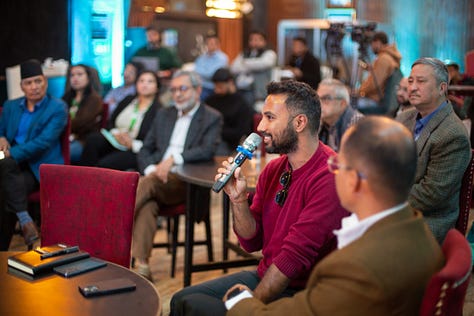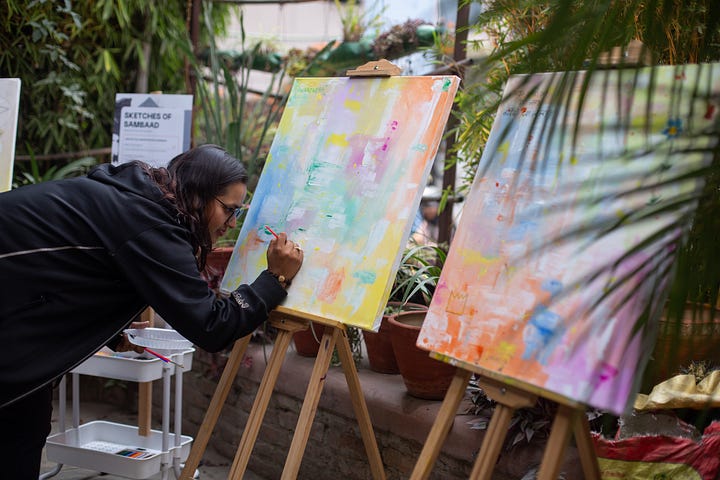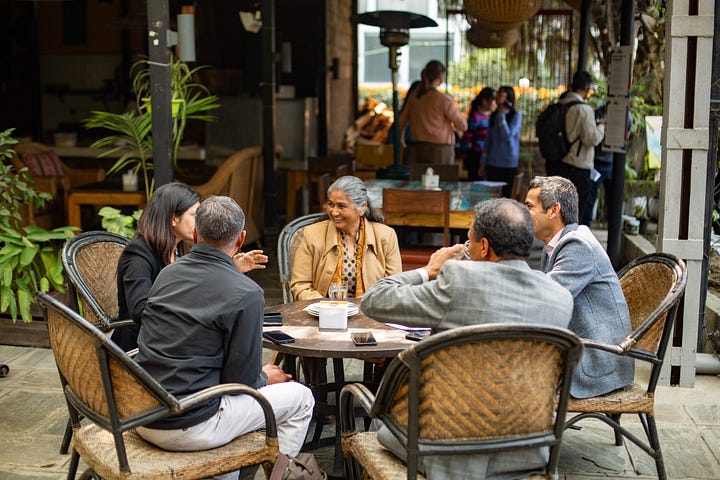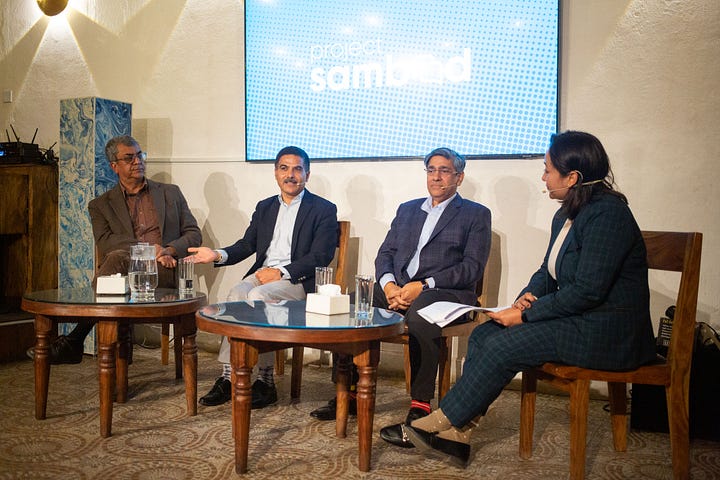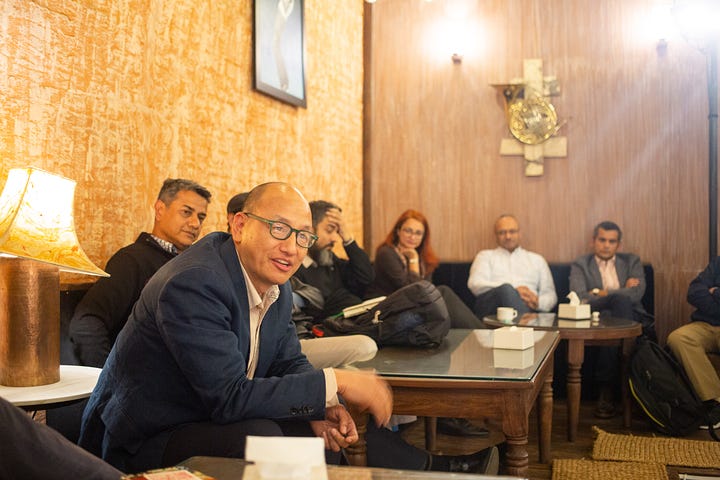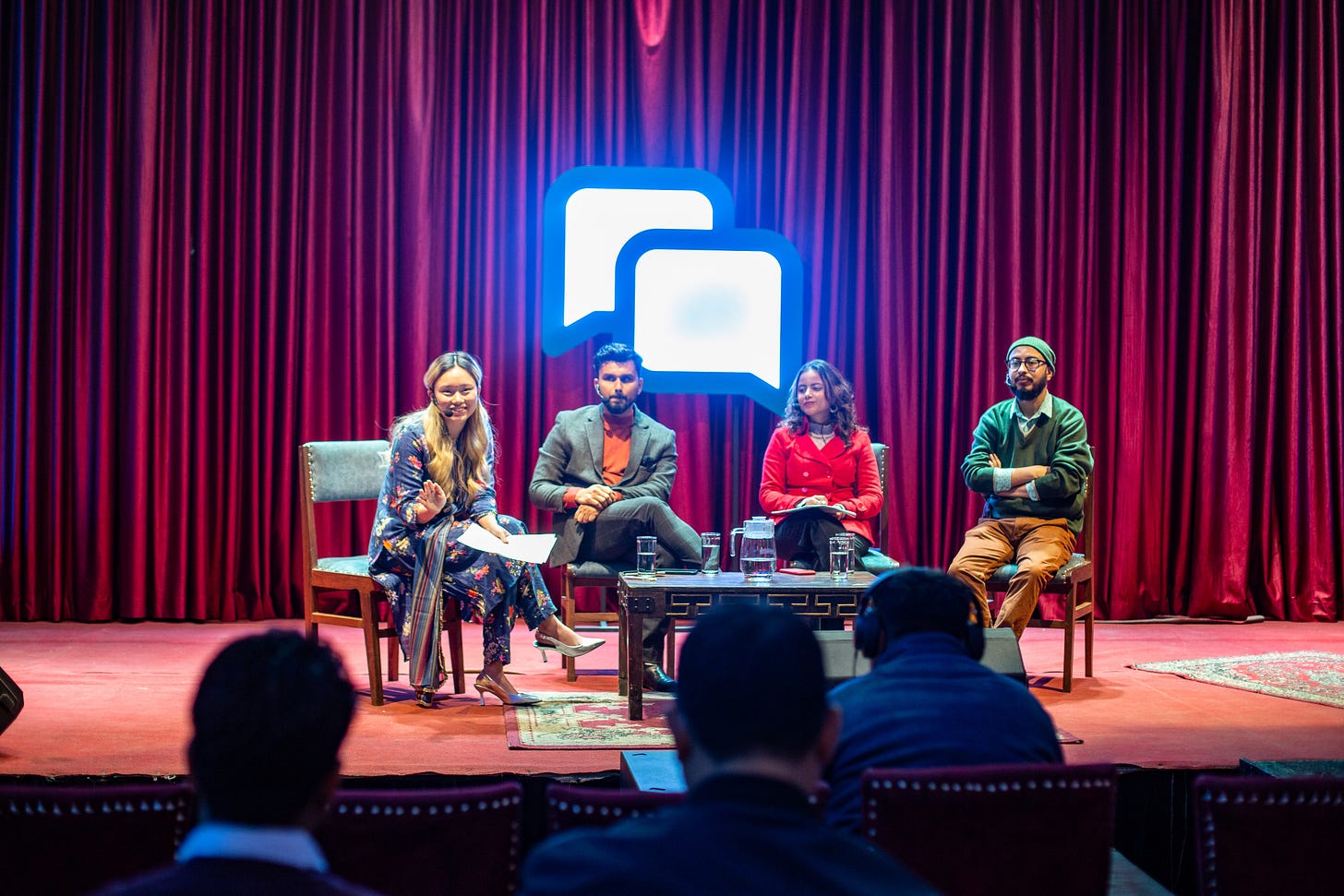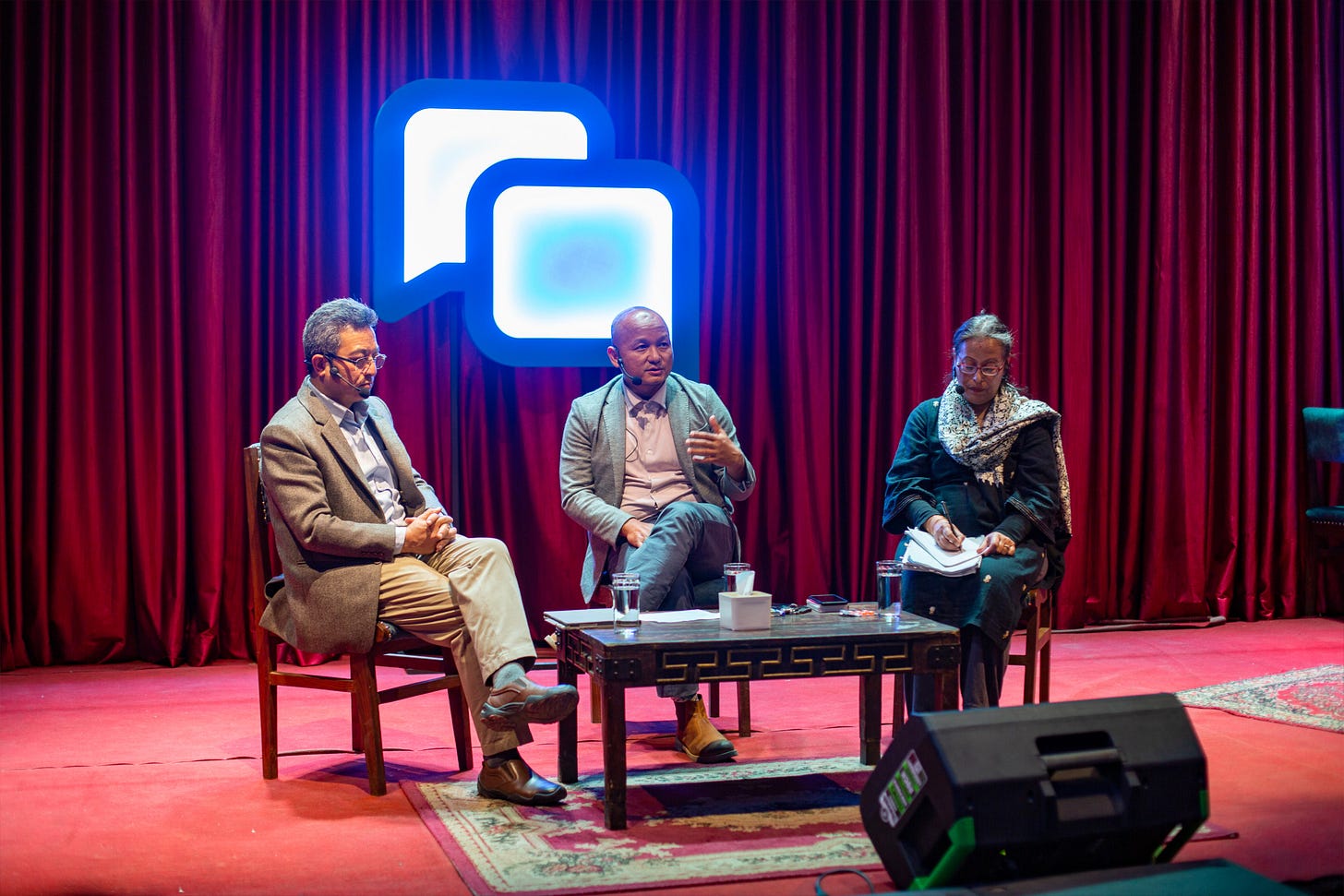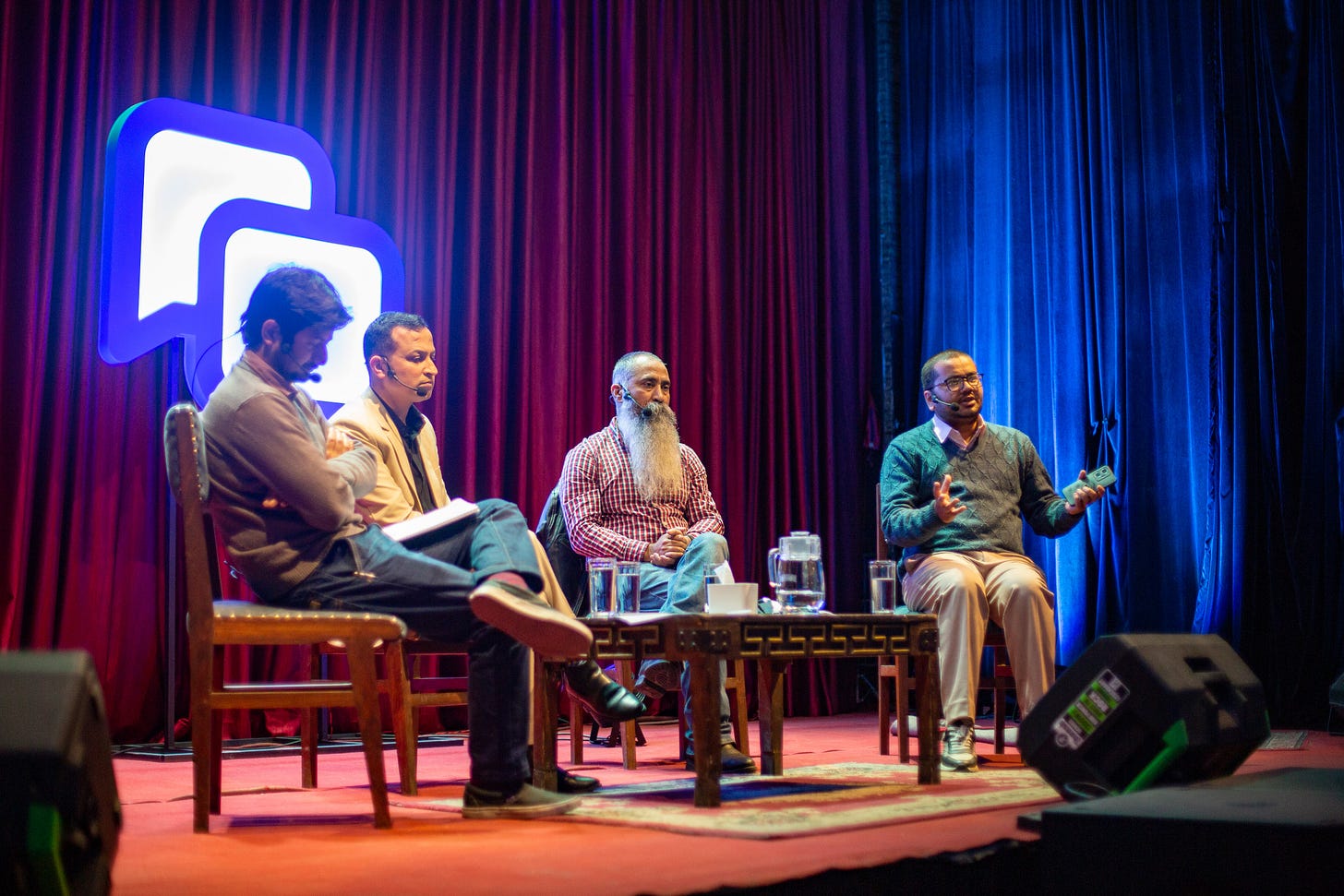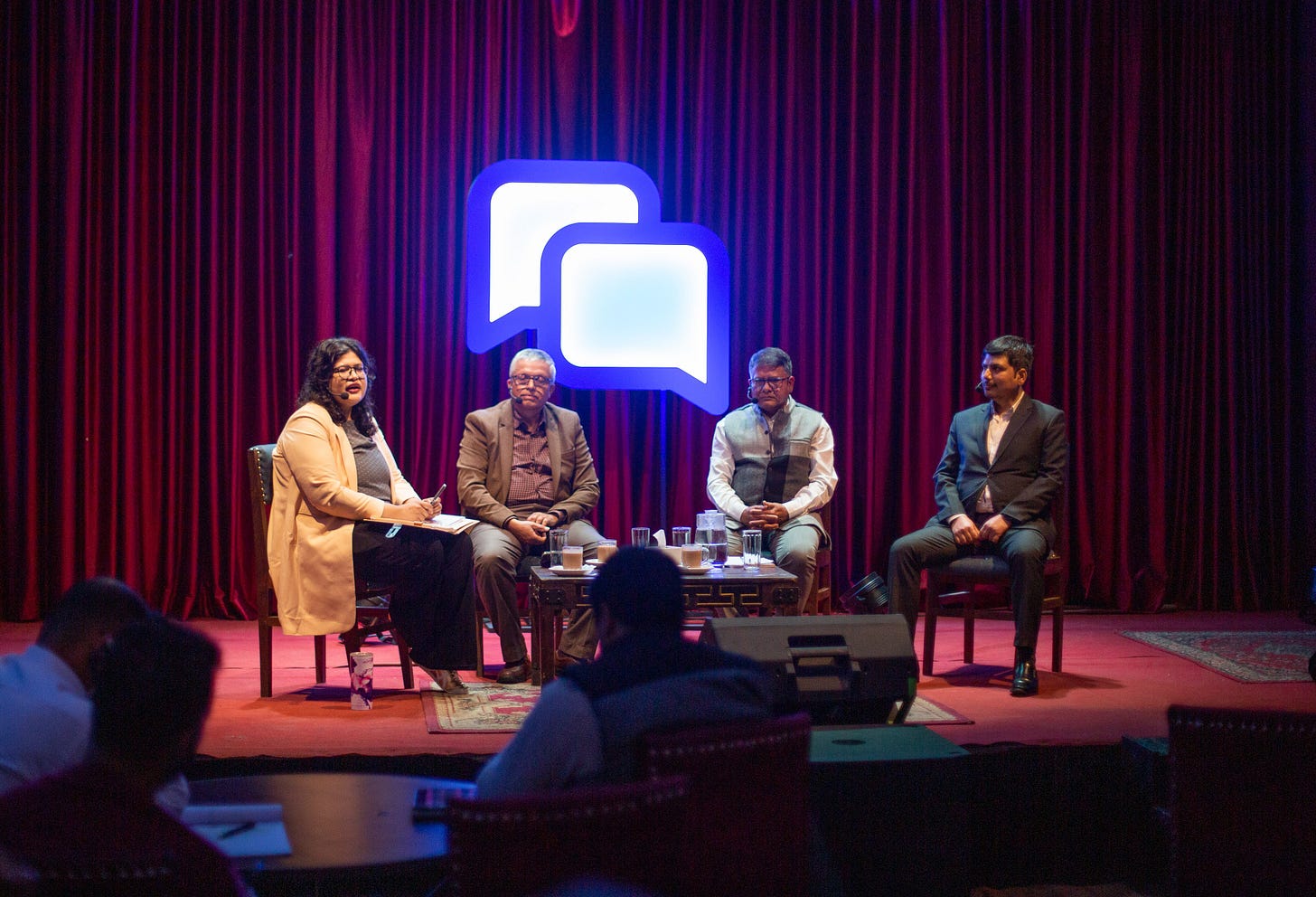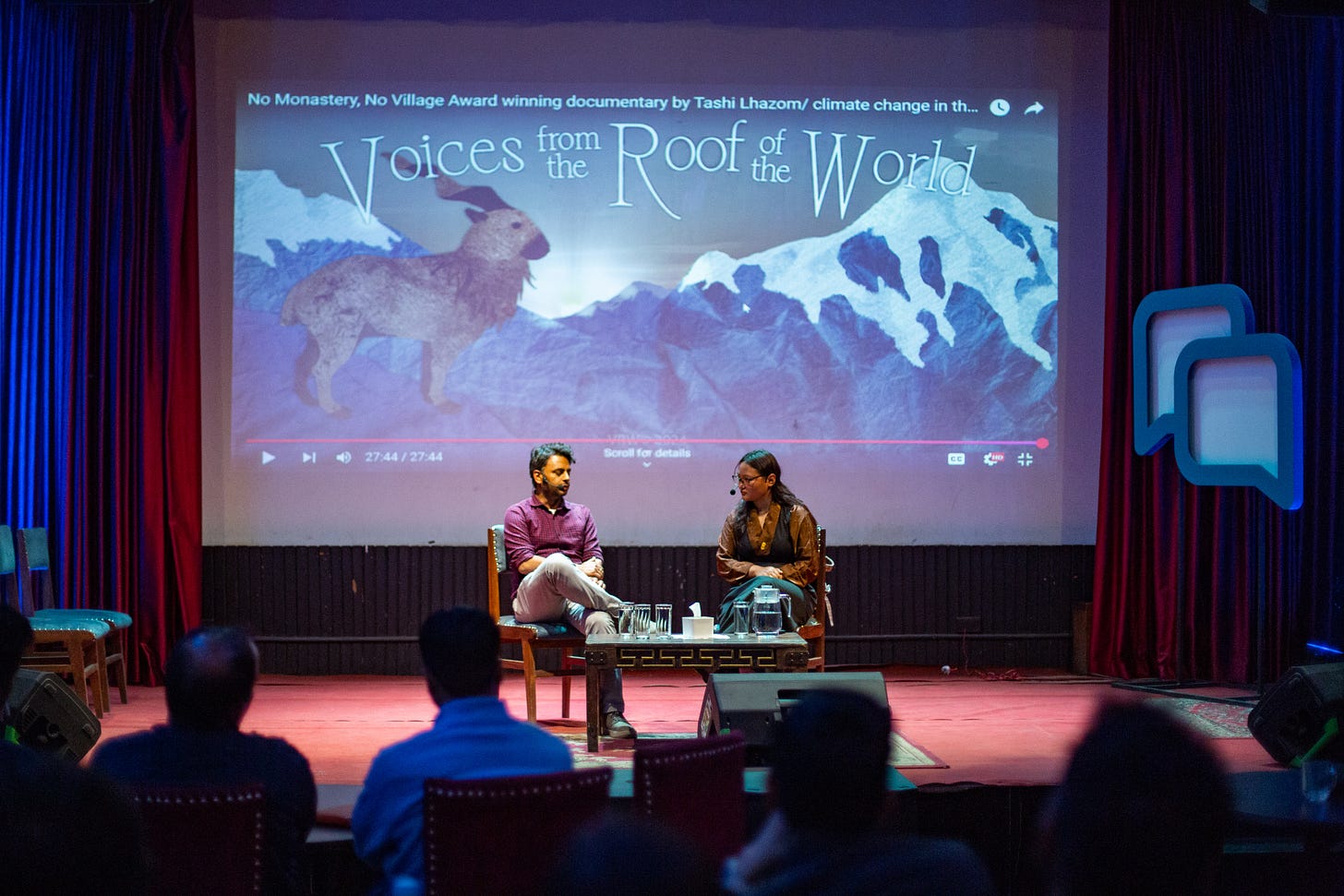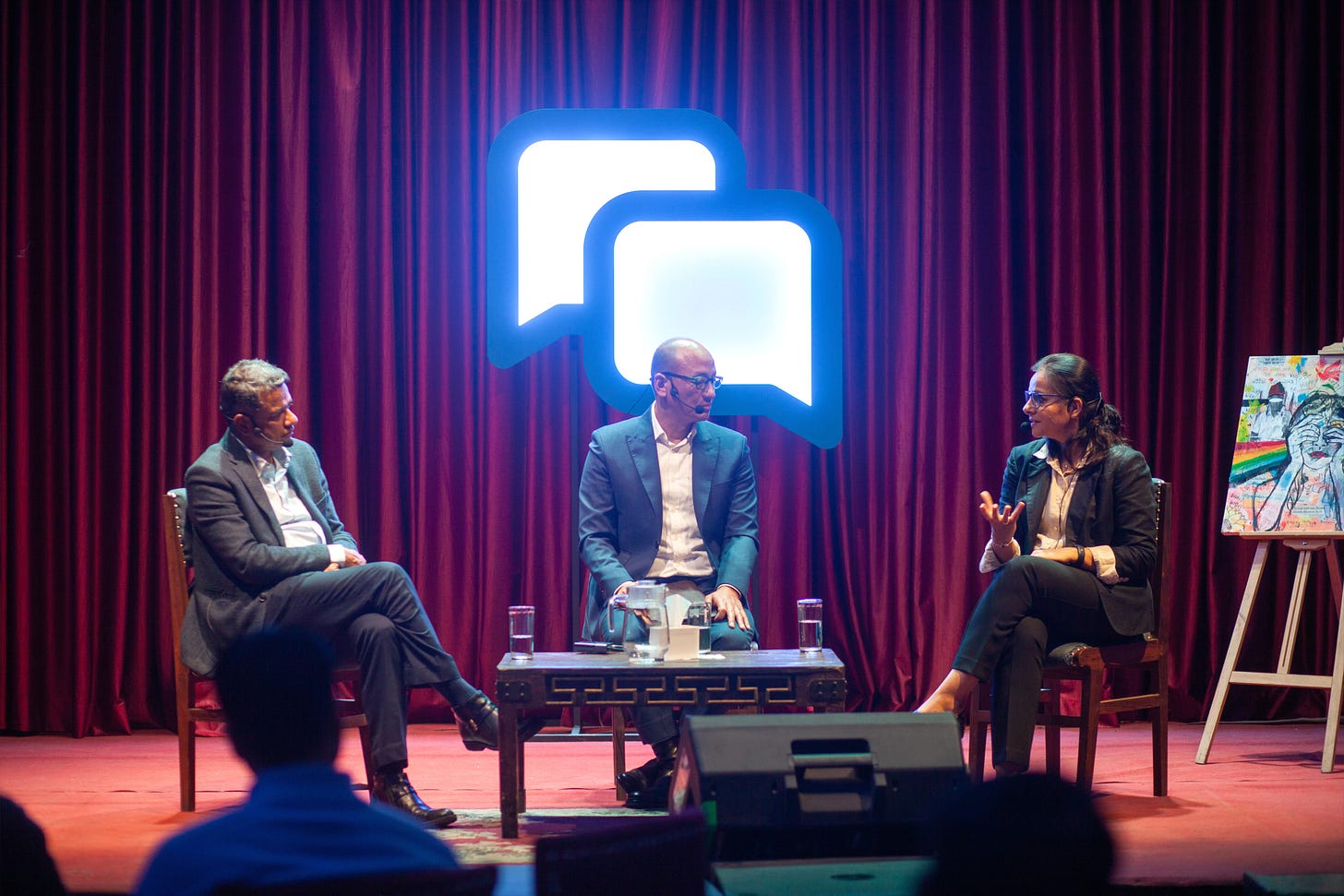Project Sambaad (Bhaag Dui): Takeaways
Not Just Another Kathmandu Conference: Project Sambaad Bhaag Dui’s Collaborative Effort to Spark National and Regional Conversations on Nepali Society and Policy. Here’s What We Learned!
Over the course of 2 days and seven dynamic sessions, a diverse group of thought leaders and change-makers explored the evolving landscape of Nepal's civil society, media, urban development, and broader societal challenges. Organized by Project Sambaad, a collaborative platform fostering national and regional conversations on Nepali society and policy within a broader South Asian context, the discussions delved into issues like the identity crisis in civil society, the role of alternative media, and the fragmentation of political movements. Themes such as urbanization, federalism, climate change, and the push for a more inclusive democracy also emerged, highlighting the interconnectedness of local and global factors shaping Nepal’s future. This collection of discussions reflects both the dilemmas facing the country and the diverse voices working toward solutions, showing that the road ahead is as much about navigating paradoxes as it is about forging new paths to change.
On the Evolution of Nepali Civil Society: Co-Opted or Still Catalyzing Change?
This conversation on Nepali civil society highlighted several pressing issues, including an ongoing identity crisis, a decline in effectiveness, and the fragmentation of what was once a unified agenda. The powerful civil society that helped overthrow the autocratic monarchy in the 1990s now appears directionless, divided, and increasingly politicized, with internal infighting among leaders and a lack of cohesion among various civil society actors. There is no longer a clear, recognizable face representing Nepali civil society.
The discussion also emphasized the evolution of civil society in Nepal. While it was born in the 1990s out of a need to respond to political change, by 2025 it has transformed into a broader landscape that includes think tanks and research organizations focused on governance, politics, foreign policy, democracy, and citizen engagement, etc. These organizations now hold valuable knowledge with the potential to influence policy and shape Nepal's future development.
One key point raised is the accusation that NGOs and research organizations are being co-opted by foreign donors, accused of prioritizing external agendas over Nepal’s own development needs. This narrative, often referred to as 'dollar-kheti' (dollar harvesting), undermines the crucial work these organizations are doing in support of the government's development efforts.
While the withdrawal of USAID following Trump’s presidency caused significant disruption in the development sector, the discussion emphasized the urgent need for more genuine collaboration between organizations, even as they continue to compete for the same limited pool of funding.
How to Talk to People: On the Disconnect between Research and Reaching Out
This discussion focused on the growing role of alternative media in Nepal, which has emerged as a response to the limitations of mainstream media. Alternative media provides a platform for creatives and media professionals to cover stories often overlooked by Nepali mass media, both in print and digital formats. Beyond broadening the scope of coverage, alternative media encourages innovation in storytelling and presentation. Platforms within this space pursue diverse goals—whether inspiring change, offering fresh perspectives, or humanizing content and their shift to alternative media has allowed them to embrace non-linear production systems and rethink traditional notions of what is considered newsworthy.
A key theme of the discussion was the importance of making complex ideas and events accessible to audiences. The panel explored accessibility from multiple angles, emphasizing the need for clarity, emotional engagement, and dynamic framing. Language, narrative-building, and storytelling were highlighted as crucial tools for not only conveying a message effectively but also capturing the audience’s interest and fostering a sense of care for the issues at hand. This approach aims to move beyond passive information dissemination to active audience engagement.
The panel also challenged the belief that Nepali viewers lack interest in quality content. Many of the panelists’ platforms are actually shaped by direct feedback and requests from their audiences, reflecting an active and engaged viewership. However, as one panelist pointed out, while there is demand for well-researched content, it doesn't always lead to a more informed public. Analytics show that even viewers of in-depth platforms continue to consume mass media filled with misinformation, disinformation, and sensationalism.
Additionally, the discussion addressed the niche nature of research-based and thematic content, noting that platforms like Kalam and PODS attract specific audiences. Rather than viewing these niches as limitations, the panelists encouraged seeing them as communities with strong engagement potential. Anup also emphasized the importance of research communication in securing strategic financing for local research. This has become increasingly relevant as development finance shifts due to geopolitical changes, highlighting the need for local civil society organizations to work toward greater self-sufficiency.
Baadi, Balen, ra Basti: On the Future of Kathmandu's Urban Landscape
In this conversation, the discussion revolved around how Kathmandu can be viewed as a tale of three cities: the Newa settlements, informal settlements, and formal settlements, each with its historical governance and varying relationships with local authorities. The speakers explored different governance approaches within the framework of urban planning, emphasizing how these strategies impact the city’s growth and infrastructure.
A central focus of the discussion was the September floods, which caused significant damage and loss of life, exacerbated by poor infrastructure, unplanned construction, and settlement planning. The conversation also touched on the September 2024 Supreme Court verdict extending no-construction zones along major rivers in the Kathmandu Valley, which came just days before the floods, raising important legal and urban planning concerns.
The speakers also examined the current local government's approach to development in Kathmandu. There was a consensus that a city should serve everyone, not just the affluent, with the state bearing some responsibility for landless settlers, particularly the elderly and vulnerable, and for providing alternative housing options for self-sustaining populations in informal settlements. However, it was noted that the local government's focus has largely been on aesthetic improvements (such as waste management, the removal of street vendors, and the conservation of heritage sites), which may not qualify as genuine development and often disproportionately affect marginalized communities.
The conversation highlighted the complex informality of urbanization in Kathmandu and stressed that solutions cannot be mechanical but must be dynamic enough to address these informalities. The protection of citizens' rights to livelihood was also a key point, with an emphasis on abandoning discriminatory policies and adopting inclusive, integrated strategies.
Additionally, the informal settlements were recognized for their role as a first line of defense during the September floods, acting as a barrier to prevent the water from reaching deeper into the city. The conversation also explored what constitutes sustainable and resilient urban development in a disaster-prone city like Kathmandu, including the importance of indigenous knowledge in conservation and disaster mitigation.
Samriddha Nepal: A View from the Provinces
This session began by emphasizing that in a federal state, development and economic aspirations must center around provinces and sub-federal units, ensuring that provincial voices are heard. The speakers highlighted how the federalization of Nepal provided civil society, especially outside of Kathmandu and in marginalized areas, an opportunity to flourish. With the decentralization of power, various organizations were able to identify specific areas of focus and approach development through a local lens, in stark contrast to the previous system where everything was centralized in Kathmandu.
However, one of the persistent challenges is the continued centralization of laws formulated in Kathmandu (at the federal level), which directly affect people in other provinces. The discussants pointed out the ongoing lack of synergy between national policies and local realities, resulting in disconnections between the laws passed in the capital and the practical needs of the provinces. Additionally, they noted that true federalism remains elusive, as political upheavals at the federal level often disrupt governance at the provincial level.
Provincial CSOs, in particular, face difficulties working with the government when plans or initiatives developed with the provincial government are abruptly halted or altered following political instability and government changes. This lack of continuity and uncertainty makes it challenging for CSOs to function effectively and meet their objectives.
New World Disorder: Trading Realities in an Uncertain and Mercurial Period
The discussion focused on Nepal’s participation in trade through multilateral (WTO), regional (SAFTA), and bilateral (Nepal-India Treaty of Trade) frameworks, which have led to some benefits, such as easier trading compared to 20-25 years ago. However, Nepal has not fully harnessed the potential of these trade arrangements. Despite limited utilization of preferences, Nepal has benefited from duty-free and quota-free access to markets due to its least developed country (LDC) status. The discourse on LDC graduation, however, remains limited, and there are no clear action plans to address potential fallout on specific products or markets. More evidence-based studies are needed to understand the negative impacts and prepare an action plan.
Rather than focusing on distant markets, the discussion emphasized the need for domestic policies that integrate Nepal into regional value chains. This requires addressing domestic constraints and undertaking outward-oriented trade diplomacy to resolve these issues.
Regarding global trade challenges, particularly the US’s stance under the Trump administration, which used tariffs to exert influence, it was noted that US institutions exist to prevent extreme outcomes. Additionally, the likelihood of other countries adopting similar approaches is low, as trade wars would harm all parties involved.
The consensus was that Nepal’s limited exposure to global trade, due to its small export basket, somewhat isolates it from the current external uncertainties. However, without strengthening its domestic industrial ecosystem, Nepal will remain on the lower rungs of global trade.
No Monastery, No Village: A Conversation on Climate and Community
No Monastery, No Village: A Conversation on Climate and Community is a compelling documentary that delves into the profound relationship between a remote village in north-western Nepal, its ancient Buddhist monastery, and the looming threat of climate change. Directed by Tashi Lhazom, the film highlights the village of Halzi, where the Halzi Rinchenling Monastery stands as the cultural and spiritual center. As climate change accelerates, a glacial lake threatens to flood the community, and the villagers must navigate the precarious balance between preserving their heritage and confronting environmental disaster.
The director also shared fascinating insights into the village’s informal governing structure, particularly the role of the Gumba (monastery), which serves as a more effective and immediate form of governance than the distant local government, which has struggled to provide meaningful support to the villagers.
The discussion contained the various themes of climate and community, exploring how climate change impacts not just the environment, but the very fabric of rural life. They touched on the challenges of documenting such a fragile subject and the intimate process of filming in such a remote and isolated setting.
The conversation demonstrates the resilience of the community and the centrality of their cultural traditions as they adapt to the challenges posed by both climate change and the lack of external assistance.
Unpacking the Paradoxes of Nepali Society [Bhaag Dui]: A Reflection through the Sambaads
In this discussion, the speakers sought to summarize the conversations that took place over the two days of Project Sambaad (Bhag Dui), examining the complexities of Nepali society through its social, political, and economic dimensions. They explored the progress and challenges of democracy in Nepal, focusing on the institutionalization of federalism and the vision of a truly inclusive society.
Drawing from their experiences as academics, citizens, and civil society members, the speakers reflected on the transformative changes since the decade-long People's Movement (1996-2006). While acknowledging symbolic improvements in inclusion, the speakers expressed concerns about the effectiveness of democratic and federal institutions that emerged after the movement. They discussed how these institutions have struggled to bring about meaningful change, particularly in ensuring the full inclusion of marginalized groups.
The panelists also noted that the unifying agenda that once brought together diverse groups to overthrow the monarchy has since lost momentum, with elite capture continuing to undermine progress. This has resulted in political instability, which hampers the effective functioning of the federal system, especially for provincial governments that have yet to fully harness the powers granted by the Nepali constitution.
The conversation also highlighted the various movements that have emerged in response to the ongoing confusion and challenges faced by Nepal today, reflecting a complex landscape of evolving struggles for change and reform.
Gallery:


